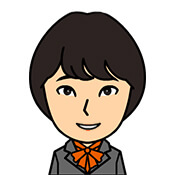
-고 is often used in the sense of parallelism to put several stories together.
But it is also used to tell a story in sequence along the flow of time.
Here we will practice another nuance of -고 and its usage.
Stories along the time line.
Talking through the sequence of actions.
To tell a story in chronological order, -고 is the following image.
A Story in Time.
①아침을 먹어요.
I have breakfast.
②그리고 학교에 가요.
Then I go to school.
①+②
↓↓↓
③밥을 먹고 학교에 가요.
I have breakfast.and then go to school.
One action ends, then the next begins.
The previous action or situation is over, and then we move on.
It’s like putting these into one sentence.
Use “-고” in time series with verbs only.
Here 고 will be the combination with verbs only.
Av + -고
보다 + -고 = 보고
먹다 + -고 = 먹고
입다 + -고 = 입고
끝나다 + -고 = 끝나고
식사하다 + -고 = 식사하고
※Av = an action verb

Come after lunch.
(먹다)

I left home as soon as I got the call.
(받다)

We went out without a car.

Please enter your PIN and press the confirm button.
(입력하다)
Let’s separate this from the parallel expression -고.
How to use “-고” and notes.
The content cannot be swapped before or after.
When speaking in chronological order, the front and back of a sentence cannot be interchanged.

I’m leaving the meeting and going home.

I saw the news about the hurricane and called my friend.

I don’t always carry cash.ん

I was very surprised when I heard about the accident.
If the content of the previous and next sentences are interchanged, the story may not be true, and the sentence may not be complete.
The subject matter should not be disjointed.
For chronological nuances, be careful that the subject is always one.

If I work without eating, I have no strength.
(Chronological nuances)

I had tonkatsu and my coworker had curry.
(Parallel expressions)

Eun-gyung drank soju and Ji-su drank beer.
(Parallel expressions)
Different subjects are parallel expressions -고, which changes the sentence into a sentence with different nuances.
Try making sentences while thinking about “what to do and then what to do next.”
